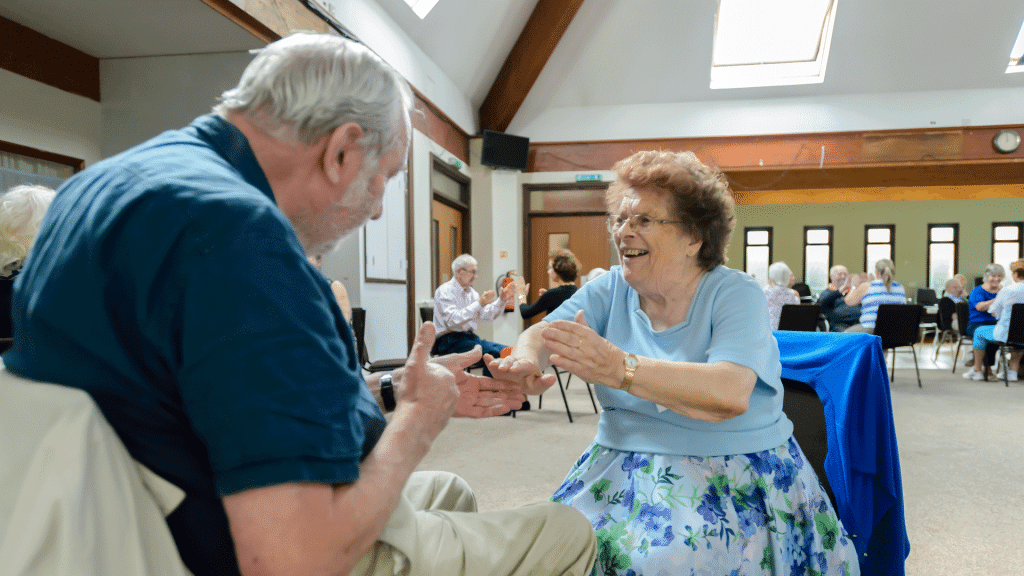When Professor Sir Chris Whitty gave oral evidence to the Health and Social Care Committee this week, he described physical activity is one of the most effective tools we have for supporting healthy ageing.
Speaking as part of the inquiry into Healthy Ageing: Physical Activity in an Ageing Society, the Chief Medical Officer made a very strong case for viewing movement as a foundation for ongoing independence and wellbeing, not just fitness.
Sir Chris reminded the Committee that the goal of an ageing society should not just be longer life, but better life with more years lived in good health, with strength, mobility and confidence. He highlighted that participation in regular activity declines sharply with age, dropping from around three-quarters of people in their late fifties and sixties to just over a third among those aged 85 and above. He told the committee that this represents both a public health challenge and a missed opportunity.
Read our recent article on Longevity Medicine here.
One of the most pleasing elements of his evidence was the emphasis on the fact that small changes making a big difference. The greatest health gains, he said, come from those currently doing very little or no activity at all. Even a short daily walk or a few minutes of light exercise can have a transformative impact on strength, balance, and independence. A professional in the sector where we can be focused on structured programmes, gym memberships and performance outcomes, it’s a reminder that inclusion, accessibility and encouragement matter more than intensity.
Professor Whitty also drew attention to the barriers older adults face including things like uneven pavements and poor transport links, and intimidating or inaccessible leisure facilities. He stressed that creating an active society for all ages means designing environments that make moving easy, safe and appealing. As the Centre for Ageing Better has also highlighted, too many older people feel that many activity spaces are not for them, which reinforces inactivity and isolation so we need to be able to address that perception as well as providing the activity itself.
The impact of inequality featured heavily in his evidence to the committee with older adults living in deprived communities or with long-term health conditions being considerably less likely to be active and far more likely to experience the consequences of inactivity including frailty, loss of mobility and independence. He urged that addressing inequality was central to supporting healthy ageing across the population.
The CMO’s evidence reinforces what our own written submission to the inquiry set out clearly: that the sport and physical activity workforce has a vital, professional role to play in enabling people to live well for longer. Our sector’s impact goes far beyond organised sport or gym-based exercise. It includes community walking groups, balance and mobility sessions, home-based strength training, or simply encouraging daily movement through supportive environments and social connection.
CIMSPA CEO, Tara Dillon reflected on this in response to the CMO’s appearance:
“CIMSPA’s written evidence underlined that this is not just about participation in being active, it’s about independence, confidence and quality of life. The CMO’s evidence makes that case with absolute clarity. Our professionally recognised workforce is uniquely placed to help older adults stay active, but we must make sure they have the right training, recognition and support to do so. This means embedding professional standards around ageing, inclusivity and behaviour change at every level of the sector. The introduction of professional status enables practitioners with specialist expertise in working with older people to be recognised as Advanced or Senior Practitioners. This gives commissioners and health and social care professionals who are looking to support older members of the community, confidence that they are working with or referring to an expert.”
The takeaway from Sir Chris Whitty’s evidence is both encouraging and challenging because although the science is clear that movement is medicine, delivering that medicine effectively requires a professionally recognised physical activity workforce and system designed for people in later life and connected to local health and community networks, that can be scaled.
The CMO’s evidence is an incredibly helpful driver for the continued ambition of ensuring that every older person, wherever they live, has the opportunity and support to stay active because that will define whether our ageing society can also be a thriving one.
